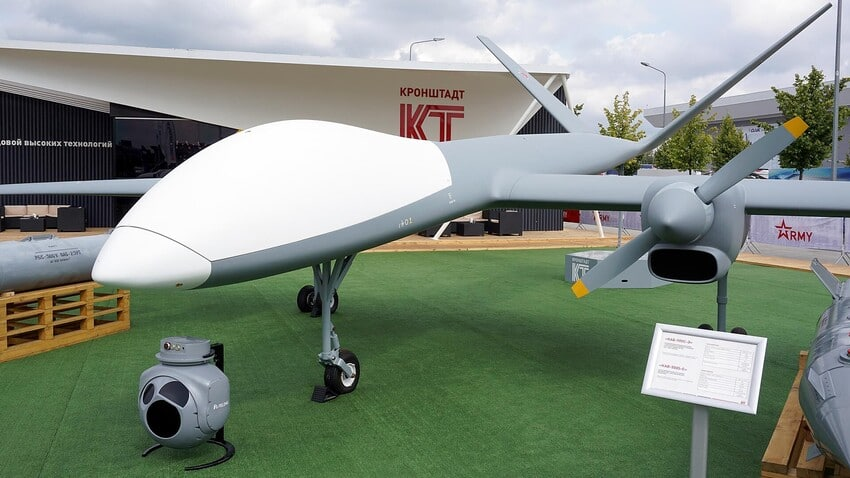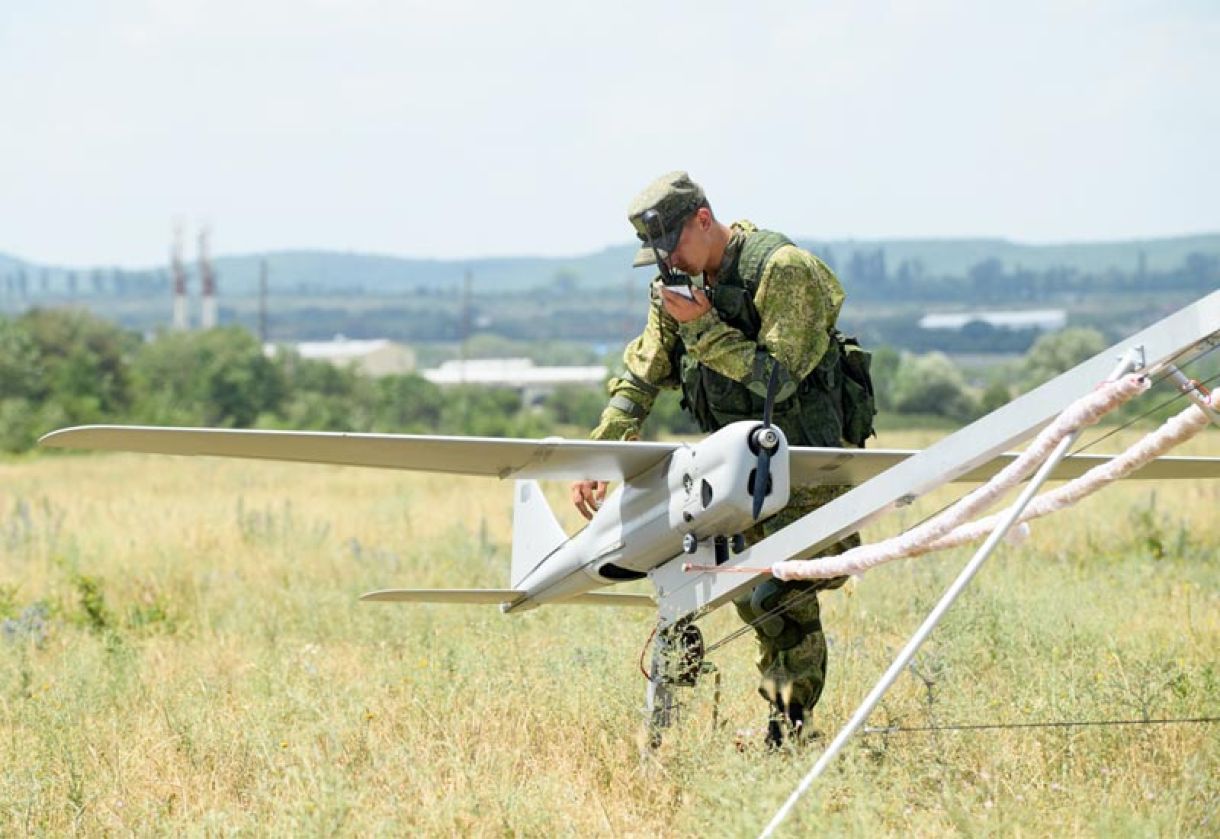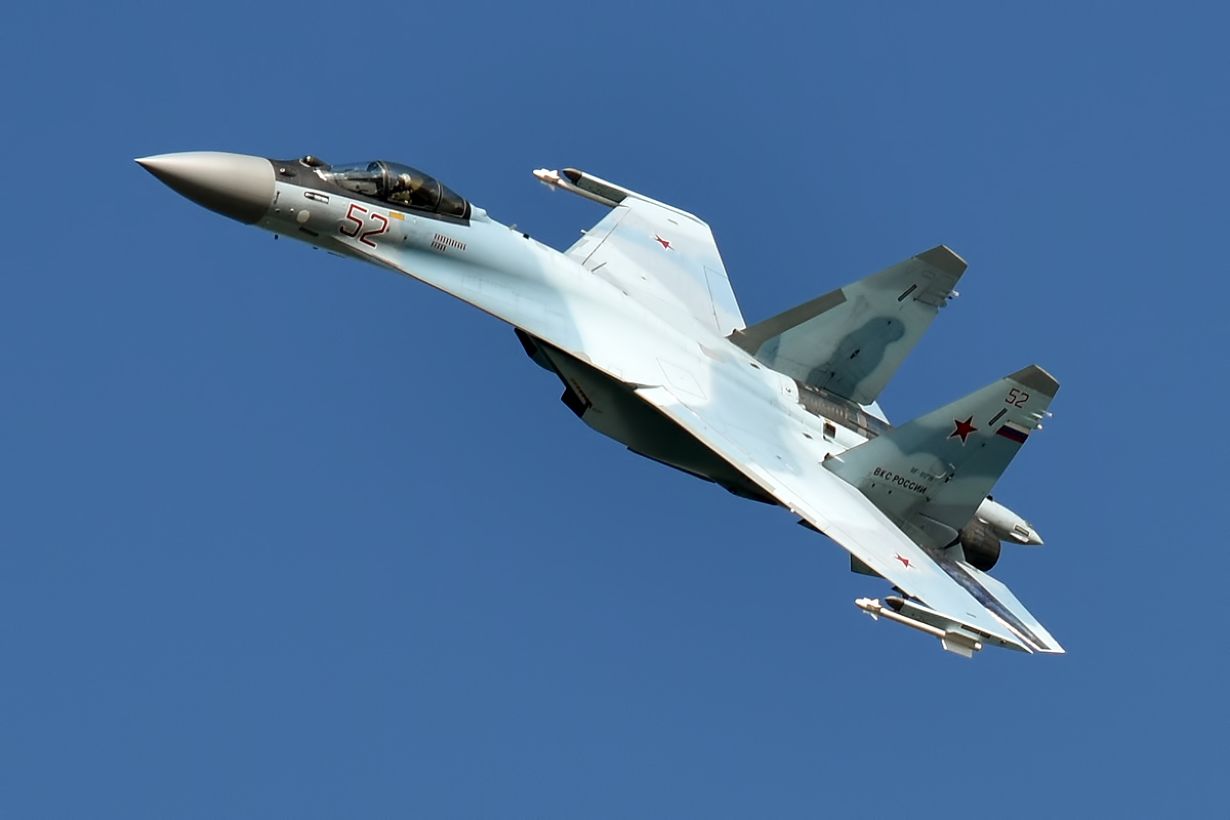Russia appears set to deploy heavy attack drones capable of carrying 100-kg FAB-100 bombs.
Russia’s former Roscosmos chief, Dimitri Rogozin, who now leads the “Tsar’s Wolves” (A team of military experts who provide “technical assistance” to troops in Donbas), stated in a Telegram post today that Russia would soon field drones with “serious weapons – from 82 and 120-mm mortar mines to FAB-100.”
Sirius (Inokhodets-RU) Drone
It was likely that Rogozin was referring to the possible deployment of the Russian Sirius (Inokhodets-RU) drone developed by the St. Petersburg-based Kronstadt Group.
The Sirrius is a heavy drone weighing 2.5 tons that can reportedly carry 450 kg of weapons and can stay in the air for 20 hours at an altitude of 7,000 m (23,000 ft.).
While primarily an attack drone, the Sirius can also be used to patrol designated areas to plug gaps in defenses using its ability to immediately attack and destroy small-sized or weekly protected targets such as advancing reconnaissance by force teams.
Equipped with a Synthetic Aperture Radar, the Sirius can map the terrain for cruise missile routing and mortar engagements.

Serial Production
According to the Pentagon intelligence briefing documents leaked on social media in March – April 2023, the Sirius drone took to the skies on its maiden flight on February 27.
Serial production of the drone is planned at Dubna near Moscow. On November 16, 2021, Kronstadt DG Sergei Bogatikov told RIA Novosti, “The prototype Sirius is already being assembled at our pilot plant in Moscow.”
According to various Russian sources, the drone is likely to be operationally deployed in the near future. Rogozin himself has alluded to the likelihood in an earlier post on Telegram.
When Russia started its military campaign in Ukraine on February 24, 2022, Russian forces were ‘UAV Challenged.’ In contrast, the NATO-trained Ukrainian forces were well equipped with small reconnaissance UAVs as well as attack drones such as the Turkish Bayraktar TB2.
Lacking reconnaissance, targeting, and attack drones, Russian forces suffered significant losses to accurate Ukrainian artillery fire and direct drone attacks, despite the somewhat pedestrian attack capabilities of the Bayraktar.
Russia Forging Ahead Of Ukraine In Drone Warfare
The Russian Ministry of Defence (RuMoD), possibly under pressure from military bloggers and technology enthusiasts, such as the Tsar’s Wolves, was quick to make amends.
Promising UAV projects, which the RuMoD had earlier supported but not pushed, were fast-tracked. As a result, capable small and medium drones started to appear on the battlefront in increasing numbers.
Within a year of the campaign’s beginning, Russia didn’t just catch up with Ukraine in drone warfare; it tilted the balance in its favor.
Artillery support drones have allowed Russian artillery to continue dominating the battlefield despite the reduced availability of artillery shells, with production falling well short of demand.

The accuracy of the Orlan-10 drone, guided Russian artillery fire, and near infallible counterbattery ability of kamikaze drones, such as the Lancet, have enabled Russia to retain its overwhelming artillery superiority.
Medium altitude ISR drones such as the Orion, also developed by the Kronstadt Group, are providing good targeting information and facilitating attacks by RuAF fighters and bombers well behind the battlefront using glide bombs.
What Russia has not fielded so far is a heavy drone capable of destroying targets by itself. The advent of the Sirrius drone is set to change that.
Likely Tactics For Sirius Operations
Unlike the Orion drone, which is mostly used for tactical ISR along the battlefront, the Sirius drone features a built-in satellite communication terminal giving it a much longer operating range.
The drone also features a communication suite which, besides facilitating control by a ground-based pilot, also facilitates cooperation with piloted aviation. The drone can be part of a mixed formation! According to TASS, Sirius has been tested jointly with piloted aircraft as of August 2022.
The Sirius drones will likely fly under the cover of RuAF fighters – Su-35S and Su-30SM – flying air dominance patrols. The fighters fly air dominance patrols 24×7 as pairs, with each pair covering a different sector along the battlefront.

They provide defensive cover to Russian attack helicopters and fighters (Su-25, Su-34) and deter Ukrainian fighters from attacking Russian forces.
When flying air dominance patrols, RuAF fighters invariably carry a single Kh-31 Anti-Radiation Missile (ARM), besides long-range RVV-BD, medium-range RVV-SD, and short-range RVV-MD air-to-air missiles.
The Kh-31 missile deters Ukrainian medium-altitude AD systems, such as the S-300 and Buk, from targeting RuAF fighters. If a Ukrainian S-300 or Buk radar lights up to track a RuAF fighter, it is immediately attacked by a Kh-31 missile.
The Sirius heavy attack drone will always operate under the cover of RuAF air dominance patrols. Manned RuAF fighters don’t intentionally enter the engagement envelope of medium-range Ukrainian air missile defenses in order to avoid risk to human life.
However, with the unmanned Sirius, there would be no such restriction. Sending a Sirius drone into airspace that is known to be contested would be a good way of drawing out and attacking Ukrainian AD missile systems.
When flying in contested airspace, the Sirius will not be an easy target. The drone is built like a conventional aircraft featuring a thin elongated fuselage. It has straight wings and a V-tail.
The bulk of airframe parts for UAVs are made of composites. As such, the drone will likely be low observable in the RF spectrum.
The US Patriot systems recently acquired by Ukraine have a poor record against slow-moving, low-observable drones. As to the S-300 and Buk AD systems, the systems are known to be running out of missiles.
Engaging drones may not be judicious use of the limited number of missiles. Not to forget – such an engagement would expose the missile battery to the Kh-31 attack!
- Vijainder K Thakur is a retired IAF Jaguar pilot. He is also an author, software architect, entrepreneur, and military analyst. VIEWS PERSONAL
- Follow the author @vkthakur




